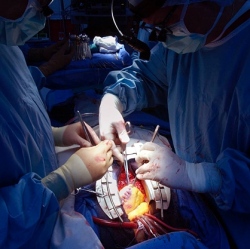
Most who suffer from such an injury never fully recover, and many end up with partial or even full paralysis. Although we’ve made great strides in understanding how spinal injuries damage nerves and how we might fix the spinal cord in the future, and even how those patients can cope in the meantime, we still don’t know how to repair the nerves when such an injury occurs.
However, scientists at Imperial College London have recently discovered a mechanism that allows them to repair, and even regenerate, nerves in the central nervous system after a spinal cord injury.
The research team started by studying the peripheral nervous system (which controls the nerves not associated with the brain and spinal cord). The PNS will actually grow back about 30% of its nerves when damaged, allowing the return of some feeling and movement in those parts of the body. Because the central nervous system (CNS) doesn’t do this, the researchers wanted to understand the process in the PNS and see if they couldn’t also use that process on the CNS.
By studying mouse models and cells, they compared the two responses. They discovered that the PNS has chemical processes that signal and jumpstart new nerve growth and that a protein called P300/CBP-associated factor, or PCAF, triggers this process.
